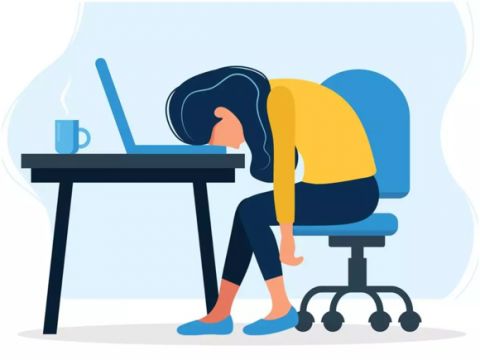
Vol. XXIII, No. 12, November/December 2023
- Editor's corner
- Post-pandemic nonresidential construction costs up more than one-third
- Heightened competition for leisure time and dollars
- Gen Z's ideal eats
- Changes in age groups over time
- Zoom fatigue is real
- Average STILL not good enough. What do you think about being "Extra" ordinary?
- Peach is the 2024 color of the year
- The growing at-home entertainment competition
- The LONGEST article ever written about the out-of-home entertainment industry just got LONGER
- Consumers are embracing neo-hedonism
- How many Millennials are using each social platform?
Zoom fatigue is real

A new study in Scientific Reports reported that videoconferencing exhaustion, known as Zoom fatigue, is real and that virtual meetings exhaust the brain more than face-to-face meetings.
The researchers in Austria had 35 university students take part in 50-minute lectures that were held both in person in a conventional lecture hall and online via videoconferencing. The researchers analyzed the effects of the meetings using electroencephalography (EEG) and electrocardiography (ECG), methods that noninvasively record brain and heart activity using electrodes stuck on the head and chest, respectively. They also gave the volunteers questionnaires asking about fatigue and mood. They found that after 50 minutes of videoconferencing, significant changes in physiological and subjective fatigue could be observed.
The brain and heart readings suggested that videoconferencing led to significantly greater signs of fatigue, sadness, drowsiness, negative feelings, and less attention and engagement than a face-to-face lecture. The questionnaires also showed the volunteers felt significantly more tired, drowsy, and fed up and less lively, happy, and active from videoconferencing than face-to-face sessions.
Study co-senior author Gernot Muller-Putz at Graz University on Technology in Austria said, "On a broader social scale, the consequences materialize as a potential deterioration in the quality of communication and collaboration, impacting both professional and personal relationships."
The researchers suggested that to reduce Zoom fatigue, "individuals and organizations can adopt practices such as scheduling regular breaks." They recommend a break after 30 minutes, as after 50 minutes, fatigue has already set in.
Subscribe to monthly Leisure eNewsletter
Vol. XXIII, No. 12, November/December 2023
- Editor's corner
- Post-pandemic nonresidential construction costs up more than one-third
- Heightened competition for leisure time and dollars
- Gen Z's ideal eats
- Changes in age groups over time
- Zoom fatigue is real
- Average STILL not good enough. What do you think about being "Extra" ordinary?
- Peach is the 2024 color of the year
- The growing at-home entertainment competition
- The LONGEST article ever written about the out-of-home entertainment industry just got LONGER
- Consumers are embracing neo-hedonism
- How many Millennials are using each social platform?


